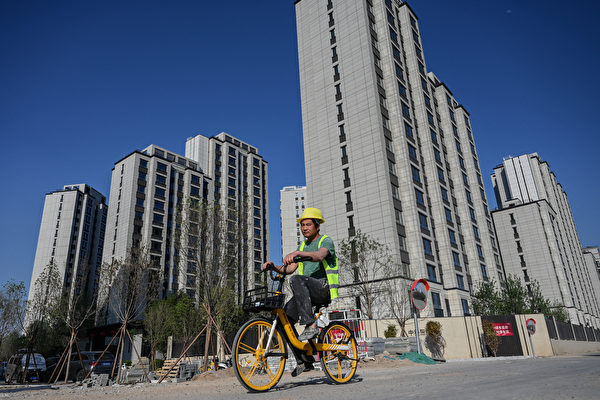The Chinese National Bureau of Statistics announced on Friday (May 17th) that China’s economic growth rate was 3.1%, lower than the economists’ forecast of 3.7%, while industrial output grew by 6.7%, exceeding expectations. Experts analyze that China’s consumption has lost momentum, overcapacity is prevalent, and economic imbalance is worsening.
Throughout this year, China’s export-driven manufacturing sector has been boosting the country’s economy, while the prolonged real estate crisis has been dragging down domestic demand. Although exports showed growth in April, consumer prices remain sluggish. Credit has contracted for the first time since 2005, indicating a soft market.
Larry Hu, Greater China economist at Macquarie Group, noted the dual-track recovery China is experiencing. He mentioned that the mixed data might prompt authorities to strengthen support for marginal profits but wouldn’t lead to significant changes.
Following the data release, Chinese stock markets fell accordingly. The onshore benchmark Shanghai Shenzhen 300 Index dropped by 0.3%, and the Hang Seng China Enterprises Index declined by 0.1%.
Additional data released on Friday showed the stark polarization of China’s economy. Fixed asset investment in China grew by 4.2% in the first four months of this year, slightly slower compared to previous data. However, real estate development investment plummeted by 9.8%.
The National Bureau of Statistics stated that the external challenges facing China in the future are becoming increasingly complex, severe, and uncertain. They urged authorities to promptly implement existing macroeconomic policies.
The lackluster growth in consumption may prompt the Chinese government to push for plans to upgrade machinery and home appliances for both businesses and households. Since the end of last month, authorities have been introducing policies across various cities to stimulate consumption, including limited subsidies for car purchases.
Bruce Pang, Chief Economist for Greater China at real estate services and investment management company Cushman & Wakefield, remarked that the effects of the consumer goods upgrades program have yet to manifest. Overall, consumer expectations have not shown signs of improvement.
One of the major factors dragging down consumption is the decline in automotive sales, which dropped by 5.6% compared to the same period last year, marking the largest monthly decrease in nearly two years. Chinese car manufacturers are engaging in price wars, potentially leading consumers to postpone their car-buying plans.
Sales of clothing, footwear, and textiles decreased by 2% compared to the same period last year, the first monthly contraction since the end of 2022.
Starting from Friday, the Chinese authorities are set to issue RMB 1 trillion (approximately USD 138 billion) worth of ultra-long-term special sovereign bonds. Additionally, the authorities are considering a plan for local governments to acquire millions of unsold homes to reduce inventory.
Raymond Yeung, Chief Economist for Greater China at ANZ Bank, highlighted that “real estate remains the weakest link domestically.” He added, “Clearly, the political leadership needs to tackle the issue by digesting inventory. However, the extent to which these efforts can stimulate households’ desire to purchase homes remains a question.”
Other risks persist. China’s support policies for the clean energy sector has led to overcapacity, causing a flood of cheap Chinese goods into overseas markets, impacting local businesses and workers’ employment and prompting anti-dumping investigations into Chinese export products by European and American countries.
The Biden administration announced on Tuesday (May 14th) that it will impose tariffs on $18 billion worth of products imported from China, with tariffs on electric cars increasing from 25% to 100%.
In addition to electric vehicles, tariffs on lithium-ion electric vehicle batteries will rise from 7.5% to 25%; solar cells from 25% to 50%; and syringes and needles from 0% to 50%.
【This article references reports from Bloomberg.】

